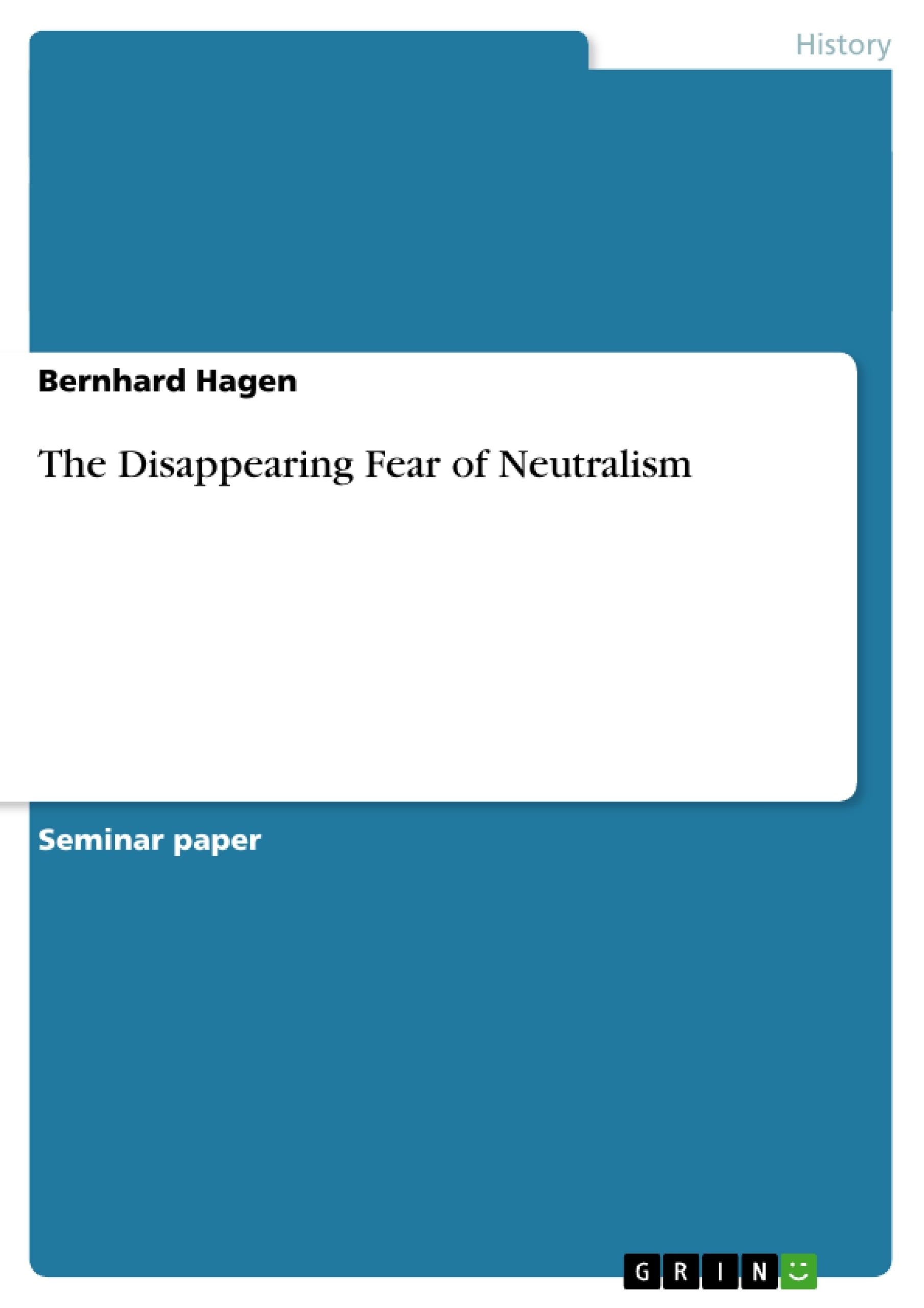Various studies discuss the American view of the Austrian State Treaty and Austrian neutrality, both concluded in 1955. There are a number of studies concerning the Eisenhower- and Kennedy Administrations regarding Austrian neutrality.
In all of them, the American fear of neutralism plays a key role. Securing Austria’s close connection with “western ideology” and therefore minimizing Soviet influence were main goals of U.S. policy towards Austria. The neutral state should at least show ideological support of the West in the East-West conflict.
In the first part of this paper, I will try to describe the difference between the terms “neutrality” and “neutralism”. Afterwards, it is necessary to discuss the Eisenhower and Kennedy Administrations policies towards Austria and give a brief overview of this time.
The main goal is to examine the Johnson Administration’s view of Austrian neutrality. The records in the Lyndon Baines Johnson Library in Austin, Texas, indicate that there was no more fear of Austrian neutralism by the mid-1960s. This paper analyses this development and discusses the status of Austrian neutrality in the sixties. Did the Eisenhower Administration succeed in pulling Austria to the “western side” in the Cold War? Was neutrality simply unimportant in the sixties? What consequences does neutrality have for the process of European integration? Other important aspects touched on in this essay are Austrian relations with Eastern Europe, relations with the European Economic Community and U.S. financial support for the Austrian Armed Forces, the “Bundesheer”.
Inhaltsverzeichnis (Table of Contents)
- Introduction
- Definitions: Neutrality vs. Neutralism
- Austrian Neutrality
- The Eisenhower Administration
- The fear of neutralism
- Challenges to Austrian neutrality
- The Hungarian Crisis 1956
- The Lebanon Crisis 1958 – A Soviet-Austrian honeymoon?
- The Kennedy Administration
- The Johnson Administration
- Vietnam - the Shadow over LBJ
- "Bridge-building": Austria and Eastern Europe
- Austria looks westwards: The EEC
- Military Sales
- Prague Spring 1968
Zielsetzung und Themenschwerpunkte (Objectives and Key Themes)
This paper explores the American perspective on Austrian neutrality in the Cold War era, focusing on the Johnson administration (1963-1969). It aims to determine whether the earlier fear of Austrian neutralism, prevalent during the Eisenhower and Kennedy administrations, had dissipated by the mid-1960s. The paper examines the Johnson administration's policies towards Austria and analyzes the role of Austrian neutrality in the context of the Cold War and European integration.
- The evolving American perception of Austrian neutrality from the Eisenhower to the Johnson era
- The impact of the Cold War on US-Austrian relations
- The role of Austrian neutrality in the context of the Cold War and European integration
- The significance of the State Department's definition of "neutralism" and its implications
- The Johnson administration's policies towards Austria and its potential influence on Austrian neutrality
Zusammenfassung der Kapitel (Chapter Summaries)
- Introduction: This chapter sets the context for the paper by outlining the existing literature on American views of Austrian neutrality. It highlights the central theme of the American fear of neutralism and its impact on US policy towards Austria.
- Definitions: Neutrality vs. Neutralism: This chapter explores the distinction between the terms "neutrality" and "neutralism," emphasizing the specific definition of "neutralism" as it was understood in the Cold War era.
- Austrian Neutrality: This chapter examines the historical context of Austrian neutrality, emphasizing its origins and significance in the aftermath of World War II and the Austrian State Treaty of 1955.
- The Eisenhower Administration: This chapter focuses on the Eisenhower administration's policies towards Austria, highlighting the fear of neutralism and its impact on US-Austrian relations. It examines specific events, such as the Hungarian Crisis of 1956 and the Lebanon Crisis of 1958.
- The Kennedy Administration: This chapter briefly summarizes the Kennedy administration's approach to Austrian neutrality, providing a context for the subsequent discussion of the Johnson administration's policies.
- The Johnson Administration: This chapter delves into the Johnson administration's policies towards Austria, exploring their impact on the perception of Austrian neutrality. It examines themes such as "bridge-building" efforts, Austria's relationship with the European Economic Community, and US financial support for the Austrian armed forces.
Schlüsselwörter (Keywords)
The main keywords and focus topics of this paper include: Austrian neutrality, Cold War, American foreign policy, neutralism, fear of neutralism, Eisenhower administration, Kennedy administration, Johnson administration, State Department, East-West conflict, European integration, "bridge-building," European Economic Community, military sales, Prague Spring 1968, Bundesheer.
- Citation du texte
- Bernhard Hagen (Auteur), 2003, The Disappearing Fear of Neutralism, Munich, GRIN Verlag, https://www.grin.com/document/29250



